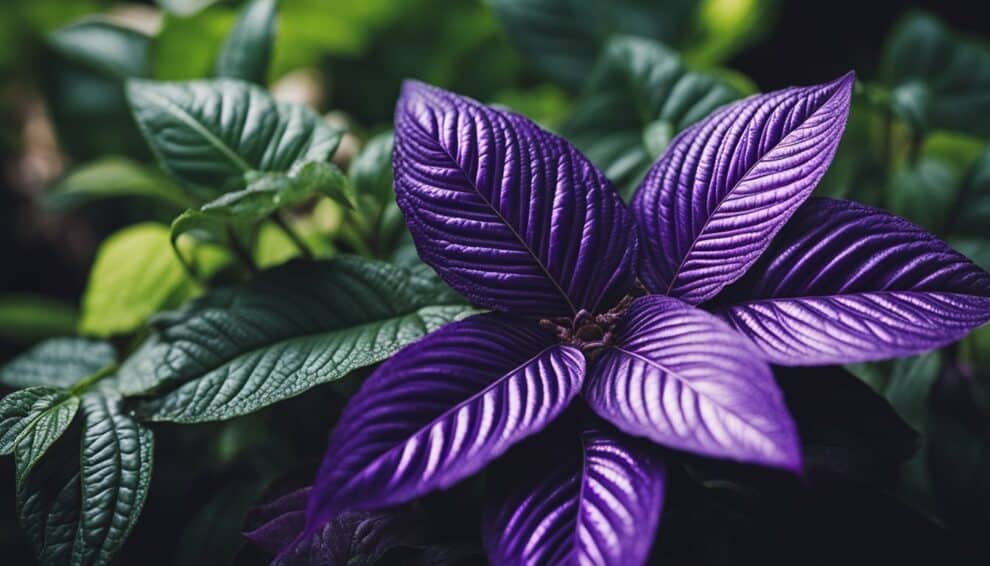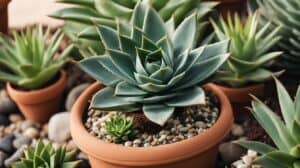Persian Shield (Strobilanthes dyerianus) is a stunning plant that can add a touch of metallic magic to any garden or indoor space. Its iridescent purple and silver leaves make it a popular choice among gardeners and plant enthusiasts alike. However, propagating this plant can be a challenge for newbies.

In this article, readers will learn about the basics of Persian Shield propagation and how to successfully grow new plants from cuttings. The article will cover the ideal time for propagation, the necessary tools and materials, and step-by-step instructions on how to propagate the plant. With this information, even those new to gardening can enjoy the beauty of Persian Shield in their own homes and gardens.
Understanding Persian Shield Basics

Defining Strobilanthes Dyerianus
Strobilanthes dyerianus, commonly known as Persian Shield, is a tropical plant that belongs to the Acanthaceae family. It is native to Myanmar and is widely cultivated as an ornamental plant due to its striking metallic purple foliage. The plant can grow up to 4 feet tall and 3 feet wide, making it an excellent choice for borders, beds, and containers.
Significance of Metallic Sheen
The metallic sheen of the Persian Shield is due to the presence of tiny hairs on the leaves that reflect light. This unique feature makes it a popular choice among gardeners who want to add a touch of glamour to their gardens. The leaves are also known to change color depending on the amount of sunlight and temperature, ranging from purple to silver-green.
Ideal Growing Conditions
Persian Shield thrives in warm and humid conditions. It prefers well-drained soil that is rich in organic matter and has a pH level between 6.0 and 7.5. The plant requires regular watering, especially during hot and dry weather, but overwatering can lead to root rot. It is also essential to fertilize the plant every two weeks during the growing season to promote healthy growth.
Overall, Persian Shield is an excellent choice for novice gardeners who want to add a touch of exotic beauty to their gardens. With proper care and maintenance, this plant can provide year-round color and texture to any landscape.
Propagation Methods
Persian Shield, also known as Strobilanthes dyerianus, is a beautiful plant that is known for its metallic purple foliage. Propagating this plant can be done using various methods. Here are some techniques that newbies can try.
Leaf Cuttings Technique
One of the easiest ways to propagate Persian Shield is through leaf cuttings. Take a healthy leaf and cut it into small pieces, making sure each piece has a vein. Dip the cuttings into rooting hormone and plant them in a well-draining potting mix. Keep the soil moist and place the pot in a warm, bright spot. In a few weeks, you should see new growth.
Stem Cuttings Approach
Another propagation method is through stem cuttings. Take a healthy stem and cut it just below a node. Remove the leaves from the bottom half of the stem and dip it in rooting hormone. Plant the stem in a well-draining potting mix and keep the soil moist. Place the pot in a warm, bright spot and wait for new growth to appear.
Seed Sowing Tips
Persian Shield can also be propagated through seeds. Collect the seeds from a mature plant and plant them in a well-draining potting mix. Cover the seeds with a thin layer of soil and keep the soil moist. Place the pot in a warm, bright spot and wait for the seeds to germinate. Once the seedlings have grown big enough, transplant them into individual pots.
Division Method
The division method is another way to propagate Persian Shield. Carefully remove the plant from its pot and gently separate the roots into smaller sections. Plant each section in a well-draining potting mix and keep the soil moist. Place the pots in a warm, bright spot and wait for new growth to appear.
By using one of these propagation methods, newbies can easily grow their own Persian Shield plants and enjoy their beautiful metallic foliage.
Caring for New Plants

When it comes to caring for new Persian Shield plants, there are a few important factors to keep in mind to ensure their health and longevity. In this section, we will cover the soil and fertilizer needs, watering and humidity levels, and light and temperature requirements for successfully caring for new Persian Shield plants.
Soil and Fertilizer Needs
The Persian Shield plant prefers well-draining soil that is rich in organic matter. A mixture of peat moss, perlite, and vermiculite is an excellent choice for planting new Persian Shield plants. Fertilizer should be applied every two weeks during the growing season, using a balanced, water-soluble fertilizer. Be sure to follow the package instructions for the correct amount to use.
Watering and Humidity Levels
The Persian Shield plant requires consistent moisture, but it is important not to overwater. Overwatering can lead to root rot and other issues. Water the plant thoroughly when the top inch of soil feels dry to the touch. In addition, the Persian Shield plant prefers high humidity levels. This can be achieved by placing a tray of water near the plant or by using a humidifier.
Light and Temperature Requirements
The Persian Shield plant thrives in bright, indirect light. Direct sunlight can scorch the leaves and cause damage. A north or east-facing window is an ideal location for the plant. The Persian Shield plant also prefers warm temperatures, between 65-75°F (18-24°C). Avoid placing the plant in drafty areas or near air conditioning vents.
By following these simple guidelines for soil and fertilizer needs, watering and humidity levels, and light and temperature requirements, new Persian Shield plants can thrive and bring a touch of metallic magic to any indoor space.
Frequently Asked Questions

How can I propagate Persian Shield plants in water?
One way to propagate Persian Shield plants in water is by taking a cutting from the top of the plant and placing it in a jar of water. Make sure the cutting has at least one node, which is where the leaves attach to the stem. Change the water every few days to keep it fresh, and wait for roots to form before transplanting it into soil.
What are the key care tips for maintaining a healthy Persian Shield?
Persian Shield plants thrive in warm, humid environments with bright, indirect light. They prefer well-draining soil and should be watered regularly, but not overwatered as this can lead to root rot. Fertilize the plant every few weeks during the growing season to encourage healthy growth.
Is the Persian Shield plant toxic to pets or humans?
The Persian Shield plant is not known to be toxic to pets or humans, but it is always a good idea to keep any plant out of reach of children and pets.
What are some common benefits of the Persian Shield plant?
Aside from its striking metallic purple foliage, the Persian Shield plant is known for its air-purifying properties. It can help remove harmful toxins from the air, making it a great addition to any indoor space.
How can I encourage my Persian Shield to grow fuller and bushier?
To encourage a fuller, bushier growth habit, regularly pinch back the tips of the plant. This will encourage new growth and help the plant maintain a compact shape.
Are there different varieties of the Persian Shield plant, and how do they differ?
Yes, there are several different varieties of the Persian Shield plant, including ‘Purple Strobilanthes’ and ‘Silver Strobilanthes’. These varieties differ in their leaf color and shape, but all share the same stunning metallic quality that makes the Persian Shield plant so unique.













